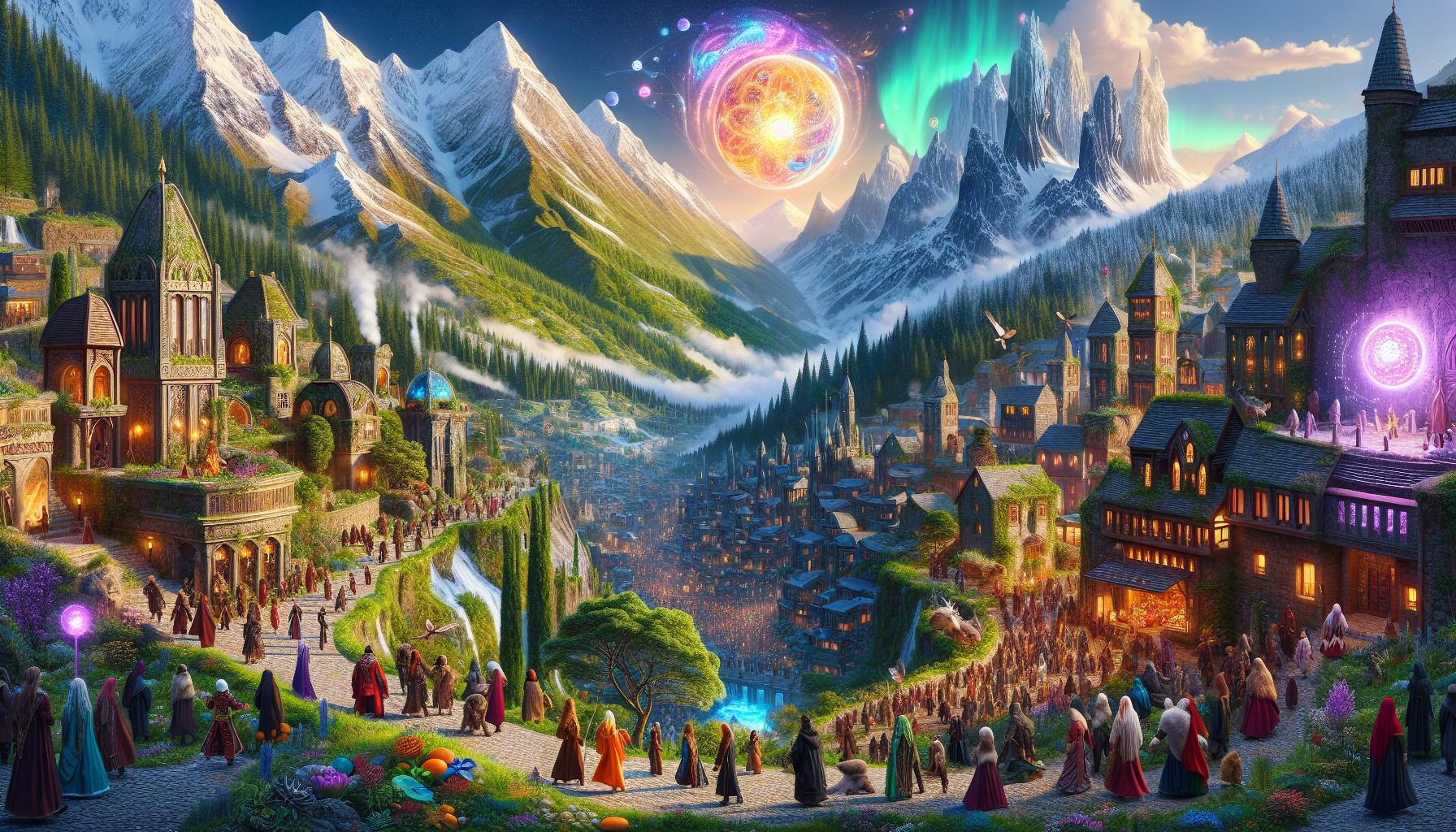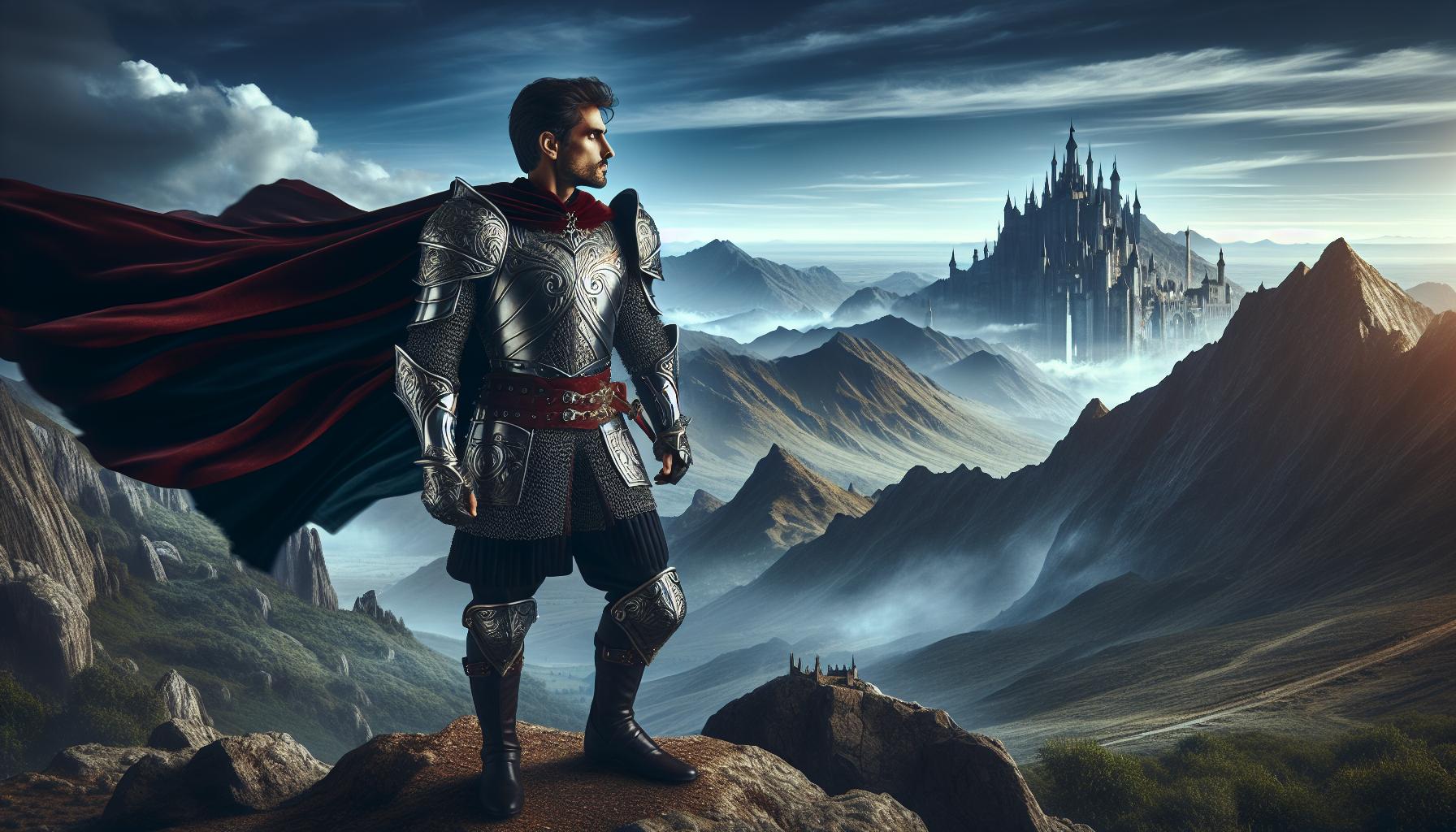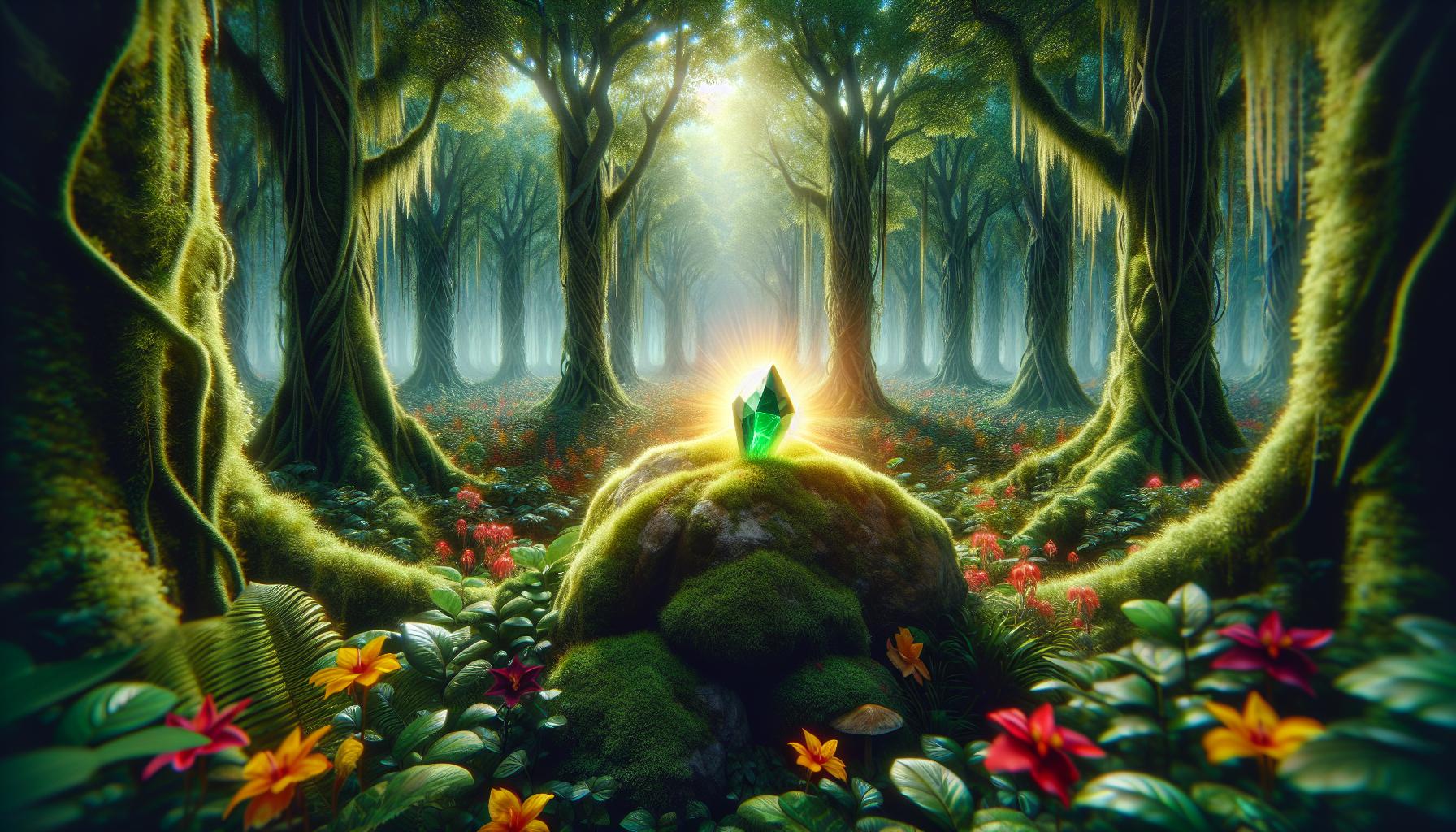Step into a world where dragons soar, wizards cast spells, and anything is possible. Fantasy realms ignite the imagination, offering an escape from the everyday into landscapes teeming with adventure and magic. Whether it’s exploring enchanted forests or embarking on epic quests, these imaginary worlds captivate hearts and minds alike. But fantasy isn’t just about mythical creatures and epic battles. It’s a playground for creativity where stories blend the extraordinary with the relatable. Dive into these realms and discover how they mirror our desires, fears, and dreams—all while entertaining with a touch of humor and a splash of wonder. Get ready to journey through fantasy: realms of imagination and unleash the power of your own creativity.
Fantasy: Realms of Imagination
Fantasy embodies diverse landscapes where creativity thrives. These realms feature mythical creatures like dragons and unicorns, each contributing to rich narratives. Magic systems vary, offering unique rules and limitations that shape story dynamics. Elaborate worlds, from enchanted forests to sprawling kingdoms, provide immersive settings for epic adventures.
Authors utilize fantasy to explore complex themes such as good versus evil, identity, and power. These stories often incorporate intricate lore, including histories, languages, and cultures, enhancing the depth of the fictional world. Characters navigate challenges that reflect real-world issues, allowing readers to engage with universal emotions and conflicts.
Fantasy genres span high fantasy, urban fantasy, and dark fantasy, each presenting distinct elements. High fantasy typically involves grand quests and heroic figures, while urban fantasy blends magical aspects with modern settings. Dark fantasy introduces morally ambiguous characters and unsettling atmospheres, expanding the emotional range of the narrative.
Visual media, including films and video games, bring fantasy realms to life through stunning visuals and interactive experiences. These adaptations attract broader audiences, fostering a vibrant fan community. Merchandise, such as books, artwork, and collectibles, further immerse fans in the fantasy universe.
Psychologically, fantasy serves as an escape and a mirror for personal aspirations and fears. It encourages imaginative thinking and problem-solving, inspiring creativity in various fields. By presenting alternate realities, fantasy allows individuals to explore different perspectives and possibilities, enriching their understanding of the world.
Overall, fantasy realms offer a limitless canvas for storytelling, blending imagination with thematic depth. They captivate audiences by providing both adventure and introspection, solidifying fantasy’s enduring appeal in literature and beyond.
World-Building in Fantasy

World-building transforms imagination into immersive realms. It lays the foundation for captivating stories and unforgettable adventures.
Creating Unique Settings
Crafting unique settings starts with detailed geography and diverse ecosystems. Authors design maps that include mountains, forests, and cities, each with distinct characteristics. Cultural diversity enhances realism, showcasing different traditions, languages, and societal structures. Historical context provides depth, explaining the origins of civilizations and conflicts. Technological levels vary, from medieval to steampunk, influencing daily life and warfare. Climate and weather patterns add challenges and opportunities for characters, shaping their journeys. Architectural styles reflect cultural values and available resources, creating visually stunning environments. Flora and fauna introduce mythical creatures and extraordinary plants, enriching the ecosystem. Political systems define power dynamics, alliances, and governance. Economic structures determine trade, resources, and wealth distribution. By integrating these elements, creators build settings that feel alive and engaging, inviting readers to explore every corner of the fantasy world.
Developing Magical Systems
Developing magical systems requires clear rules and consistent logic. Authors define the source of magic, such as elemental forces or divine entities, to establish its origin. The structure outlines how magic is accessed, whether through spells, rituals, or innate abilities. Limitations and costs prevent magic from becoming overpowering, ensuring balance within the story. Different types of magic, like healing, elemental control, or necromancy, provide variety and specialization. Magical artifacts and items add layers of complexity and intrigue, serving as plot devices or sources of power. Training and education systems reveal how characters master their abilities, highlighting dedication and growth. Societal impact shows how magic influences cultures, economies, and politics, creating intricate interactions. By meticulously designing these aspects, creators ensure magical systems enhance the narrative and contribute to the world’s richness.
Character Archetypes in Fantasy

Character archetypes provide a foundational structure in fantasy literature, shaping narratives and engaging audiences. These archetypes embody universal themes that resonate across diverse storytelling mediums.
Heroes and Heroines
Heroes and heroines drive the narrative forward, embodying courage and resilience. Typically, they embark on quests to overcome obstacles and achieve significant goals. For example, protagonists like Aragorn in The Lord of the Rings or Daenerys Targaryen in Game of Thrones illustrate leadership and personal growth. These characters often possess unique abilities or moral convictions that set them apart. Their journeys reflect the struggle between good and evil, inspiring readers to explore complex emotions and ethical dilemmas. Additionally, heroes and heroines frequently form alliances with supporting characters, enhancing the story’s depth and complexity. By confronting internal and external challenges, they demonstrate the importance of determination and integrity in achieving their objectives.
Villains and Antiheroes
Villains and antiheroes add complexity and tension to fantasy narratives, creating compelling conflicts. Villains, such as Sauron in The Lord of the Rings or Voldemort in Harry Potter, represent the antagonistic forces that heroes must overcome. These characters often possess distinct motivations and backstories that explain their actions, adding layers to the narrative. Antiheroes like Geralt of Rivia in The Witcher series blur the lines between good and evil, presenting morally ambiguous decisions that challenge traditional heroic ideals. By introducing flawed characters with relatable motivations, stories become more nuanced and realistic. Villains and antiheroes also serve to highlight the strengths and vulnerabilities of the protagonists, driving character development and thematic exploration throughout the fantasy realm.
Themes and Motifs in Fantasy Literature

Fantasy literature explores a variety of themes and motifs that enrich its narratives and resonate with readers. Good versus Evil stands as a fundamental theme, illustrating the clash between opposing forces and moral dilemmas. Iconic characters like Gandalf and Voldemort epitomize this struggle, highlighting the complexities of power and morality.
Hero’s Journey is another prevalent motif, depicting a protagonist’s quest for self-discovery and transformation. This structure, evident in stories such as The Lord of the Rings and Harry Potter, guides characters through challenges that shape their identities and destinies. Alongside this, the Quest motif drives the narrative forward, as heroes embark on missions to achieve specific goals, often involving magical artifacts or significant revelations.
Identity and Self-Discovery themes delve into characters’ personal growth and the exploration of their true selves. This journey is crucial for protagonists who face internal and external conflicts, enabling them to overcome obstacles and evolve. Additionally, Power and Corruption examine how authority and influence can lead to moral decay, presenting a cautionary tale about the misuse of power.
The concept of Fate versus Free Will challenges characters to determine their paths amidst predetermined destinies. This tension adds depth to the storyline, allowing for intricate plot developments and character decisions. Coming of Age narratives focus on the maturation process, capturing the transition from innocence to experience, as seen in many young adult fantasy novels.
Sacrifice serves as a powerful motif, emphasizing the cost of achieving greater good or personal goals. Characters often face difficult choices that test their values and commitment. Lastly, Magic remains a central motif, symbolizing limitless possibilities and the unknown. It shapes the world-building and influences the plot, providing a unique framework for storytelling.
These themes and motifs collectively create a rich tapestry that defines fantasy literature. They offer readers profound insights into human nature, societal structures, and the eternal battle between opposing forces, solidifying fantasy’s enduring appeal.
The Influence of Fantasy on Modern Media
Fantasy significantly shapes various facets of modern media, from blockbuster films to bestselling novels. Movies like Harry Potter and The Lord of the Rings showcase elaborate world-building, captivating audiences with intricate landscapes and magical systems. Television series such as Game of Thrones expand on these elements, presenting complex characters and political intrigue that resonate with viewers worldwide.
Video games also benefit from fantasy’s rich narratives. Titles like The Witcher 3 and Skyrim offer immersive experiences, allowing players to explore vast, detailed worlds filled with mythical creatures and epic quests. These games emphasize interactive storytelling, enhancing engagement through player-driven decisions and adventures.
Literature continues to thrive under fantasy’s influence. Authors like J.K. Rowling and George R.R. Martin craft compelling stories that blend traditional fantasy tropes with modern themes. Their works inspire countless other writers, fostering a vibrant community of fantasy enthusiasts who seek new and innovative narratives.
Streaming platforms leverage fantasy to attract diverse audiences. Shows such as The Umbrella Academy and Shadow and Bone integrate fantasy elements to create unique and engaging storylines. These series often incorporate contemporary issues within fantastical settings, making them relatable while maintaining their imaginative appeal.
Additionally, fantasy influences advertising and marketing strategies. Brands use fantastical imagery and storytelling to create memorable campaigns that capture consumer interest. This approach not only enhances brand identity but also fosters a deeper connection with the audience.
The economic impact of fantasy on modern media is substantial. A recent study shows that the fantasy genre contributes over $50 billion annually to the global entertainment industry. This figure includes revenue from movies, television, video games, and merchandise, highlighting fantasy’s vital role in driving economic growth.
| Media Type | Annual Revenue (USD) |
|---|---|
| Movies | 25 billion |
| Television | 15 billion |
| Video Games | 8 billion |
| Merchandise | 2 billion |
Fantasy’s pervasive influence ensures its continued prominence in shaping modern media, captivating audiences with endless possibilities and imaginative storytelling.
Fantasy realms continue to captivate audiences by offering endless possibilities where imagination thrives. These worlds don’t just entertain but also inspire individuals to explore their creativity and confront deeper themes through storytelling.
As fantasy evolves across various media it maintains its ability to connect people fostering communities united by a shared love for magical narratives and epic adventures. Embracing the wonder of these imagined landscapes lets each person embark on their own journey of discovery and reflection within the boundless realms of fantasy.


